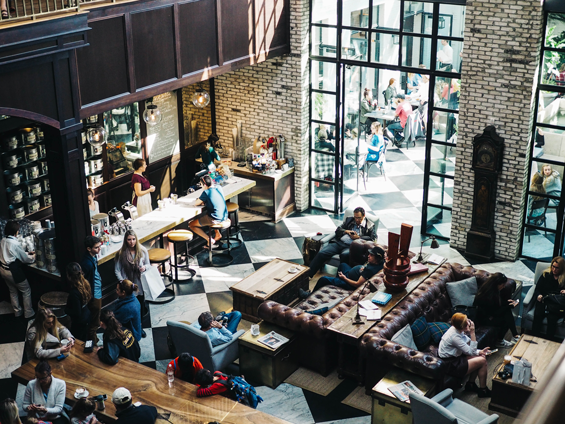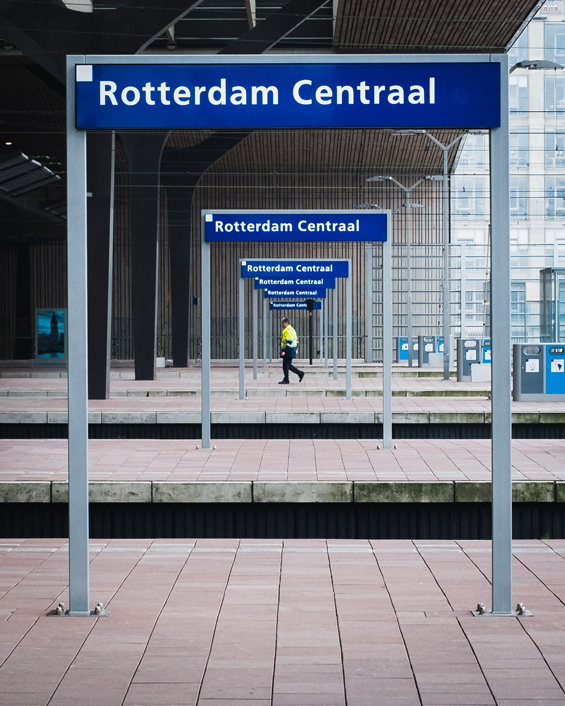How will office design and corporate culture change in a post-Covid world? And how will employers lure employees back into the workplace?
By Ian Valentine
By Ian Valentine
Which camp are you in: remote, office or hybrid? One of many divisions exposed by the global pandemic are the differing attitudes of employees to 9-to-5 office life.
The opportunity to work from home came as a welcome surprise for most white-collar workers. Technology and spare rooms rose to the occasion. Flip-flops and family breakfasts were freedom compared to the early-morning commuter train.
For some, though, the loss of social interaction and workplace identity was a severe disruption. Younger employees, forced to work in their bedrooms or compete for kitchen-table space with housemates, were denied a formative year. A virtual huddle isn’t the same as the real thing.
What now? According to Harvard Business Review, 42 per cent of employees say they are now open to remote working, compared to just 14 per cent before the pandemic. That still leaves a lot of bosses who want to get their people back where they can oversee them.
Andy Warner Lacey is director at office designers Altitude Design Consultancy. “The genie is out of the bottle for remote working,” he tells Chart magazine. “For a while, it looked as if the days of the inner-city office were numbered. But with opinion changing month by month, and boosted by the vaccination roll-out, some organisations are now keen to encourage staff back into the office. For them, training and creative collaboration have all suffered over the last year. Also, not everyone lives in accommodation that supports long-term home-working.”
Warner Lacey points out, however, that other firms have successfully changed the way they work and are now formalising their approach to a hybrid working policy, where employees split their time between working at home and in the office.
Reasons to change
To attract and retain talent, employers must now offer a work environment that meets the needs of all their staff: no easy task, given their dissimilarity. For cash-strapped businesses, there are financial considerations too. A hybrid working policy saves money by reducing square footage and staff expenses. Global Workplace Analytics, a US consultancy on workplace strategies, found that employers can save around US$11,000 a year for every person who works remotely for half of the working week.
Office design company Herman Miller believes a new approach is inevitable. “To remain relevant, offices of the future will need to build culture and community, support individual focus, and facilitate intensive teamwork,” they suggest in a new report. “Generic, open-plan desks and traditional conference rooms will be less useful. People will seek offices with work settings uniquely tuned to socialisation, individual focus, and immersive teamwork. Places like these give people the time, space and tools to solve complex problems that are difficult to address remotely. By creating offices that fulfil people’s needs on demand, both the organisations and their people will flourish.”
The pandemic lockdowns reinforced the possibilities and benefits of home-working, including time saved by not commuting. But the social experiment also clarified what is lost without face-to-face contact with colleagues. “As buildings reopen, a new challenge is to ensure that journeys to work are worthwhile, that opportunities for teams and colleagues easily to connect are maximised,” states University College London’s academic consultancy in their return-to-work guidance. “The workplace [should be] the environment of choice for efficient, effective and pleasurable work.”
Creative spaces
In the future, the whole purpose of the office could change from a place of quantitative output to a destination for qualitative interaction. Teams would meet for more creative sessions such as briefings, presentations and interviews – before doing the routine work back at home.
“Office design will need to adapt to promote concentration, relaxation, imagination,” says Warner Lacey. “Different rooms could provide different moods in terms of lighting, furniture, posture and so on. Deep down, we know that face-time is better for creativity. A video call with a PowerPoint presentation, for example, is a very constrained way of communicating compared to an all-hands workshop with a whiteboard and a wall of Post-It notes. Online training is a useful resource, but it’s no substitute for a two-way conversation when the trainee can ask questions and receive feedback.”
Design and engineering company Arup believes the traditional office is a resilient model. “It is worth remembering that an entire generation of business start-ups and entrepreneurs had a chance to work from home after the financial crisis of 2008, and yet they did not,” they state in their report Future of Offices: in a Post-pandemic World. “They wanted social interaction, a place to focus and share ideas.”
Encouraging interaction
Arup has seen employers draw inspiration from the hospitality sector to design their workspaces for employee satisfaction. Warner Lacey has also designed for the rise of activity-based working in recent years. “The key is relinquishing individual ownership of desks,” he adds. “In return, you need to provide places for impromptu meetings, such as study booths, standing-height counters and break-out areas.” He believes the ability to bump into colleagues randomly in a workplace is vital for generating ideas, especially as staff are now so nomadic.
However, any temptation to create lots of break-out spaces should be resisted. “Lots of tea and coffee points risk splitting up the floor. Better to have just one that encourages interaction across the whole floor – and then provide plenty of associated seating. If there’s a birthday cake get-together and you bump into somebody you’ve not met before or have been trying to corner for several weeks, then it’s easy to extend your conversation beyond the length of a cup of cocoa.”
Warner Lacey says companies ought to design their offices to get the most out of fleeting visits. “Allowing people to spread out is important, especially with concerns around social distancing,” he adds. “But sometimes you need to compress space, otherwise you lose the office buzz. Then there’s no point coming together in the first place.”
Protect the company culture
The burning question for employers and employees alike is: how many days in the office are too many or too few? What are the watersheds in terms of individual preference, fairness, productivity and cost?
Warner Lacey thinks there are no hard and fast rules. “Hybrid working is a neat headline for the media, but the reality on the ground is going to vary enormously. For example, in the same organisation, the finance and marketing teams might need to meet in person just once a week, whereas the creatives might benefit from coming together on a daily basis.”
Ultimately, it will require an accommodation between employers, employees and clients. Working full-time from home is at one end of the scale, while back in the office five days a week is at the other end. Perhaps a hybrid of the two is the best compromise.

Image Credit: The Creative Exchange (Unsplash)

Image credit: Serhat Beyazkaya (Unsplash)

Image Credit: Leon (Unsplash)

Image Credit: Nick Fewings (Unsplash)

Image credit: Campaign Creators (Unsplash)

Image credit: Mindspace Studio (Unsplash)

Image Credit: Lagos Techie (Unsplash)
Banner image credit: Hugo Rocha (Unsplash)